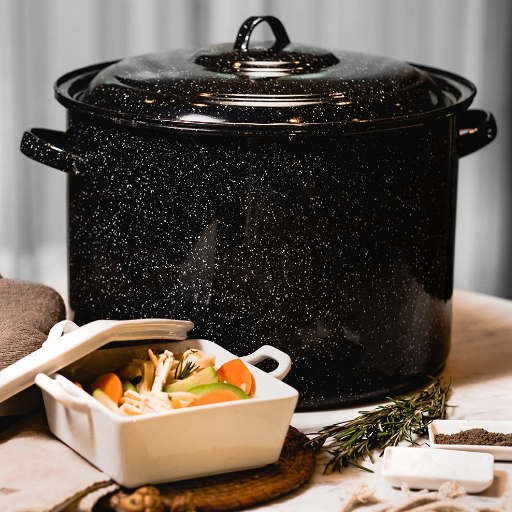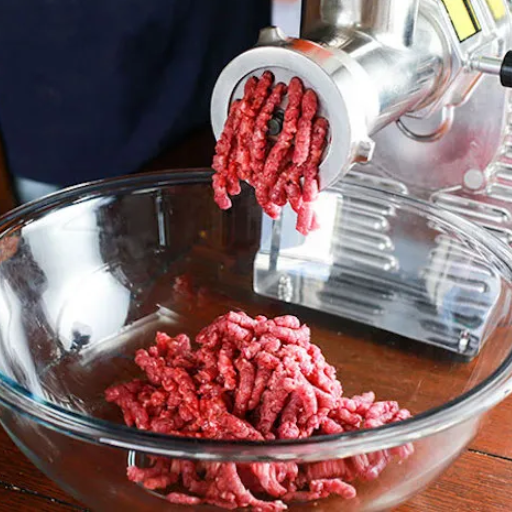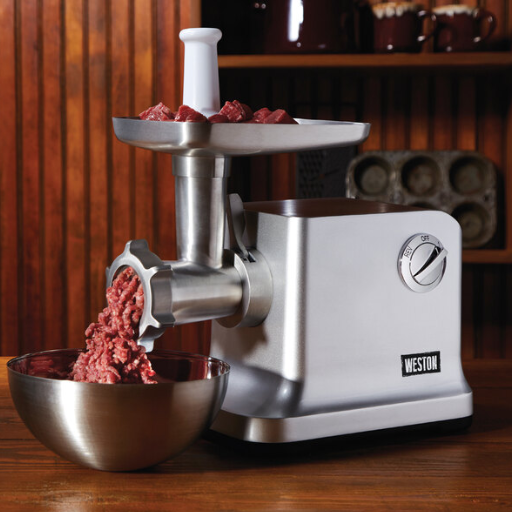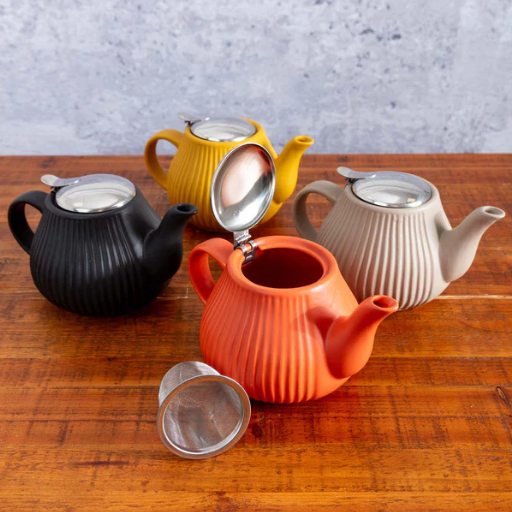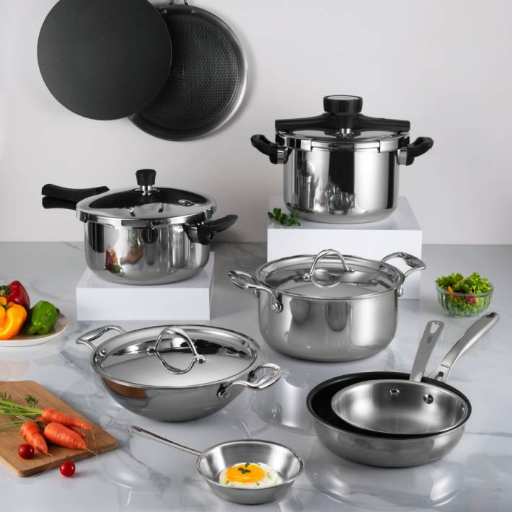Many households are trying to make healthier meals. The best part is that they do not want to compromise the taste and convenience. Ceramic air fryers provide just this. They use ceramic-coated baskets and thus guarantee a non-toxic and chemical-free cooking surface. This makes such air fryers a great option for people who care about their health. Traditional air fryers can contain worrying non-stick coatings, but ceramic air fryers provide protective, durable non-stick features, even heat distribution, and best of all, peace of mind. This article will review the best available ceramic air fryers, analyzing their advantages and features as well as how they can change your attitude towards meal preparation. We consider them to be the best for a compact design intended for small spaces to high-capacity fryers ready to feed a big crowd. Keep reading to find the ideal appliance that matches your cooking requirements and lifestyle.
What is a Ceramic Air Fryer?
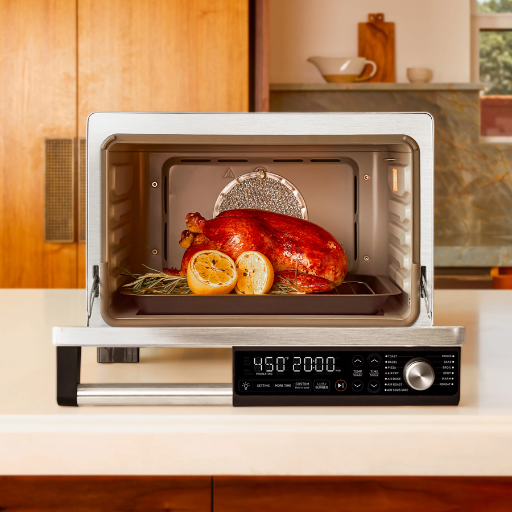
A ceramic air fryer, as its name suggests, is an air fryer whose basket or cooking surface is lined or plated with ceramic, which acts as a non-stick coating. The appliance functions by cooking food with the help of hot air circulation and a hot air fryer. The upside of the ceramic coating is that it heats up evenly and makes it easier to clean afterwards. Unlike the traditional air fryers, these models bear no scratches, which makes them safer for long-term usage as they do not release unclean chemicals when heated. Most importantly, the ceramic air fryer works by circulating hot air around your food, which makes it possible to achieve that crispy golden exterior while keeping the oil usage to a bare minimum, or none at all!
How does a ceramic air fryer differ from traditional air fryers?
|
Key Point |
Ceramic Air Fryers |
Traditional Air Fryers |
|---|---|---|
|
Coating Material |
Ceramic-coated, PTFE and PFOA-free |
Often uses non-stick PTFE coating |
|
Health Impact |
Safer, free of harmful chemicals |
May release toxins when overheated |
|
Durability |
Highly resistant to scratches, heat |
Prone to wear and scratches over time |
|
Environmental Friendliness |
More sustainable, eco-friendly materials |
Less eco-friendly due to PTFE coating |
|
Heat Resistance |
Handles higher temperatures effectively |
Has limited heat resistance |
|
Cleaning Ease |
Easier to clean, non-toxic surface |
Requires careful cleaning to avoid damage |
|
Weight |
Typically heavier due to ceramic coating |
Lighter in weight |
|
Price Range |
Usually more expensive |
Generally more affordable |
|
Aesthetic Appeal |
Sleek, modern look |
Standard design, less variety |
|
Cooking Results |
Comparable performance, even heat |
Comparable performance across models |
What are the benefits of using a ceramic nonstick coating?
Ceramic nonstick coatings are perfect for both home cooks and professional chefs alike due to the multitude of benefits they offer. Below are the listed benefits along with some technical reasoning:
- Environmental and Health Safety
Ceramic coatings do not contain harmful components such as PFOA and PFAS which makes them a safer alternative for both cooking and the environment. One of the traditional concerns with nonstick surfaces, the risk for toxic fumes even at high temperatures, is greatly reduced with this composition.
- Excellent Heat Resistance
Most nonstick coatings are well known for their uninterrupted useful life, but ceramic coatings get an additional trophy for their ability to endure substantial temperatures without a harmful chemical breakdown. Their useful life is extended further due to their capability to survive high-temperature cooking methods such as searing and baking, exceeding 450°F (232°C), and other advanced cooking techniques that involve the use of other forms of heat.
- Superior Nonstick Performance
Ceramic coatings tend to have a smoother surface and polished finish which makes them perform exceptionally in nonstick applications allowing for easy release of food.The amount of oil or butter needed to prepare the meal is less which enables healthier cooking.
- Easy Maintenance and Cleaning
You may not realize this, but the stubborn food residues not only make a ceramic coating’s appearance less appealing; they also make cleanups more difficult. However, this is not the case with ceramic nonstick pans as they can be cleaned with soap and water, in fact, they can be hand-washed too. The easiest cleaning option available is the dishwasher and guess what, many ceramic nonstick pans are also dishwasher safe!
- Even Heat Distribution
Food being cooked in a ceramic nonstick pan makes me think of the optimal food temperature. The properties of ceramics ensure that the cooking surface attains the correct temperature evenly and fast. This eliminates the chances of hot spots occurring, which can greatly hinder the results of cooking. This level of efficiency also enables energy savings alongside accurate control of temperature.
Ceramic nonstick coatings, therefore, foster ease of use, safety, and aesthetic appeal, making them a perfect choice for everyday cookware and enabling confidence in their sustainability and efficiency.
How to Choose the Best Ceramic Air Fryer?
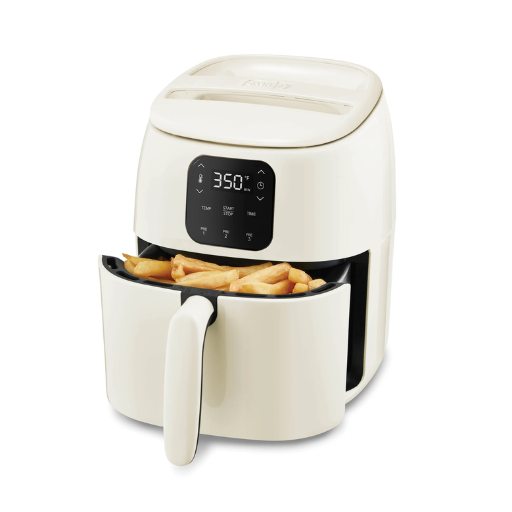
- Cooking Capacity
Assess the size of the air fryer based on your household needs. For individuals or just couples, smaller models are sufficient, however, large models facilitate entire families or those who meal prep.
- Temperature Range and Settings
Make sure an air fryer can modify the temperature and has cooking mode presets. This gives more freedom when it comes to doing different recipes, from making golden brown fries to baking.
- Ceramic Coating Quality
The air fryer should have high quality durable ceramic coating that will not blister easily. This guarantees non stick use and even distribution of heat will also be resistant to scratches and wearing down.
- Ease of Cleaning
With an air fryer the convenience compared to other ceramic coated air fryers is a breeze due to components being dishwasher safe, thus saving significant amounts of time and stress when used frequently and made for hand washing.
- Energy Efficiency
Choose a model that will do the cooking with minimized energy waste for efficient energy use, savings and environmental sustainability.
Balancing the performance, durability, and usability of a ceramic air fryer can be achieved by emphasizing these factors.
What features should you look for in a ceramic air fryer?
It is important to explicitly analyze features which affect the particular performance, life expectancy and ease of use of the ceramic air fryer. Requirements are listed below in detail for ease of consideration:
- Capacity and Size
The size of the ceramic air fryers differ with some being as small as 2 quarts to as large as 10 quarts. Some of the models fall under the category of 2-4 quarts which tend to suit individuals and small families, and there are also some models 5-10 quarts which are ideal for big households who tend to cook in larger portions.
- Temperature Range and Control
Different cooking methods require different temperatures. Most good ceramic air fryers offer a temperature between 180°F to 400°F which would allow cooking, frying, baking and a wide variety of cooking methods. It is advisable that one checks for digital display of temperature settings for enhanced precision.
- Power Output
When it comes to cooling diverse types of meals, it’s better to have higher wattage options. Higher wattage is the requirement for faster cooking, radiating heat evenly and saving time. Most ceramic air fryers offer from 1200 to 1800 watts which is a reasonable number.
- Pre-set Cooking Programs
The majority of sophisticated ceramic air fryers automatically set up cooking functions dedicated to popular foods such as fries, chicken, fish, or even desserts. The air fryer’s ease of use is heightened by its automatic settings, which improve the outcome of the food being cooked.
- Non-Stick Ceramic Coating
Choose these models where the ceramic coating is non-toxic PTFE and PFOA free. Durable non-stick surfaces greatly add to food release, cleaning, and are more environmentally friendly than conventional non-stick materials.
Evaluating all other features, you are able to find a ceramic air fryer that meets your conditions for efficiently, durably, and value.
How do ceramic air fryers compare to stainless steel models?
|
Key Point |
Ceramic Air Fryers |
Stainless Steel Air Fryers |
|---|---|---|
|
Material Composition |
Ceramic coating over metal core |
Stainless steel throughout |
|
Non-Stick Surface |
Yes, naturally non-stick |
No, requires oil or liner |
|
Chemical Safety |
Free of PTFE and PFOA |
No coating, inherently chemical-free |
|
Heat Distribution |
Even due to ceramic properties |
Uniform, with robust thermal retention |
|
Durability |
Moderate, coating can wear over time |
High, resistant to scratches and dents |
|
Cleaning |
Easy to clean; coating simplifies process |
May require more effort; grease sticks |
|
Aesthetic Appeal |
Often colorful with a sleek finish |
Polished and professional appearance |
|
Weight |
Lightweight, easy to maneuver |
Heavier, sturdier construction |
|
Price Range |
Generally affordable |
Can be more expensive |
|
Health Considerations |
Requires less oil for cooking |
May need additional oil for non-stick |
|
Reaction to Acids/Alkalines |
Can degrade with acidic foods over time |
Resistant to chemical reactions |
|
Longevity |
Shorter lifespan due to coating wear |
Long lifespan with proper maintenance |
How to Use a Ceramic Air Fryer Effectively?
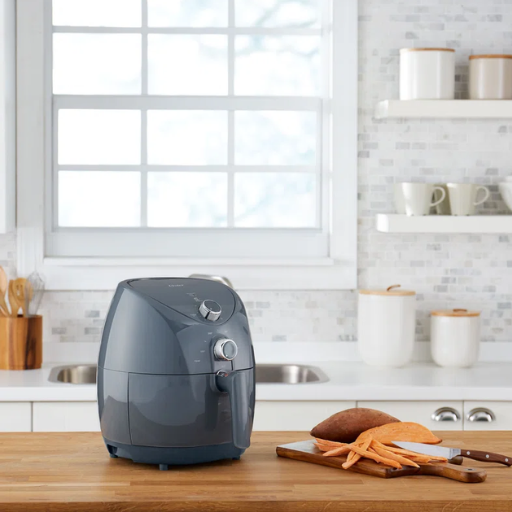
- Preheat the Air Fryer
Preheating helps in achieving set goals with regards to cooking and the result every time. For best results set the air fryer to the required temperature for anywhere between 3–5 minutes prior to adding the food.
- Use the Proper Amount of Oil
While oil usage in ceramic air fryers is low, it is recommended to lightly coat your food with some oil as this improves flavor and crispiness.
- Avoid Overcrowding
Leave enough Gap between food items to guarantee the hot air can reach evenly to all of them so that all of them could be well cooked and crisped thoroughly.
- Cook in Batches if Necessary
For optimal results with larger portions, divide food into smaller batches as this helps save efficiency and tends to make good reliable results.
- Flip or Shake Midway
To get complete cooking, turn over larger items or shake the basket midway through the cooking cycle.
- Clean After Each Use
Let the fryer cool down then use warm soapy water to clean the ceramic coated basket as this avoids build and helps prolong its lifespan. Steer clear of abrasive scrubbing tools.
Following these steps will help improve Better Ceramic Air Fryer Efficiency and Life Span Alongside Reliable Results.
What cooking functions are available in ceramic air fryers?
The ceramic air fryers offer a bunch of different cooking methods to provide ease and flexibility in the kitchen. Some of the more common functions are air frying which is the circulation of hot air to crispify the surface of the food without using too much oil and roasting. The latter is preferred for cooking meats and vegetables because it cooks them evenly. A lot of models also have a baking function so it is easy to make cakes, bread, and other sweet or savory desserts. The grilling function allows the users to obtain unfriendly high-temperature searing, which is perfect for steaks and skewers. Dehydrating’s purpose is to keep fruits, vegetables, and herbs by gently removing moisture, while additional reheating and broiling give the users leftover food and caramelized finishes. Due to all of this, ceramic air fryers can support users with diverse cooking needs. Some of the more sophisticated devices even have certain recipe programmable settings which promote effortless cooking while maintaining precision.
How do you properly air fry chicken wings in a ceramic air fryer?
The first thing to do for the ceramic air fryer chicken wing recipe is to start by prepping the wings by adding a thin layer of oil or preferred cooking spray to help with the bronzing. Salt, pepper, and rub of choice on the wings, and make sure that the seasoning is spread evenly and not just in one place. For the ceramic air fryer, the preheating is done 3-5 minutes before at 375°F. The preheat step ensures that the heat flows properly for good cooking. The wings should be neatly aligned and so placed that air can freely pass around the wings. Without proper airflow, getting it crispy will not be possible. The proper cooking time is 25-30 minutes with the wings being turned halfway through. Food safety protocols state that the wings need to hit the 165°F mark to be deemed safe for consumption. For the last two minutes, a higher setting of 400°F can be used if added crispiness is wanted. Letting the wings sit for a short time enables hydration retention, while flavor boost is another positive that comes alongside resting.
Can you reheat food in a ceramic air fryer?
Yes, you can reheat food in a ceramic air fryer effectively and safely. Ceramic air fryers are designed to circulate hot air evenly, making them ideal for reheating food while retaining its texture and flavor. To achieve optimal results, set the air fryer to the appropriate temperature, typically between 300°F (149°C) and 350°F (177°C), depending on the type of food. For example, crispy items like fries or chicken tenders may benefit from a higher setting to restore their crunch, while softer foods like casseroles require a lower temperature to prevent over-drying. Always ensure that food is arranged in a single layer to allow best air circulation. Time will range from 3 minutes to 8 based on food type, but should be monitored carefully to avoid overcooking. Always use a food thermometer to check the internal temperature before consumption; the general suggested guidance is 165°F (74°C).
What is the Cleanup Process for Ceramic Air Fryers?
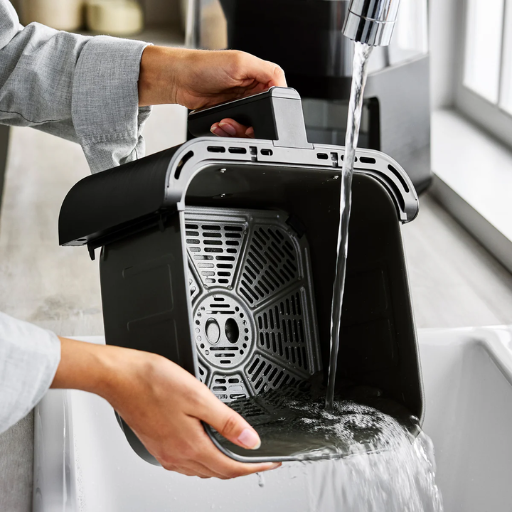
While cleaning a ceramic air fryer, several simple steps need to be followed that preserve the device’s lifespan and performance. Like always, maintenance begins with turning it off and letting it cool down. The basket and pan can be detached, soaked in warm, soapy water then scrubbed with soft sponge, to protect the ceramic coated surface; harsh scouring should be avoided. For stubborn food residues, it is best to first soak the parts for 10-15 minutes before scrubbing. Take a damp cloth and remove any interior and exterior grease of the air fryer. The main part should not be submerged in water since it contains electrical units. Lastly, all parts must be dried completely before reassembling. Remember to follow the manufacturer’s guidelines for care instructions.
Are ceramic air fryer baskets dishwasher-safe?
What easy cleanup tips can enhance your experience?
- Pre-soak Stubborn Residue
For stubborn cookware, scrubbing is only effective after some soaking. Soak for 10-15 minutes in warm, soapy water first. As directly scrubbing can be made easier, effort can be made less by up 30%. Do not use boiling hot water for soaking, some coatings don’t react well to boiled water.
- Use Microfiber Cloths
Use soft, non-abrasive sponges or microfiber cloths, as they don’t pose a threat of surface scratching or damage. Studies show that microfiber materials are between three and four times more effective at removing soiled surfaces without the use of harsh chemicals and the need of sophisticated cleaning detergents.
- Avoid Abrasive Cleaners
Cleaning solutions that are pH-neutral should be used, avoiding anything that contains ammonia, bleach, and other scrubbing particles. Data suggests the protective layer of a cleaning surface can be damaged by strong chemicals up to 20% if used routinely over several months, making their longevity questionable.
- Rinse Promptly After Use
When food utensils are done being used, sore them promptly under running water especially after working with acidic foods like sauces. Studies in material sciences show that acid residues have a gradual cement like contact with the material leading to slow material degradation over time.
- Dry Thoroughly
After washing, make sure the product is dried fully to avoid any water spots that can appear or component rusting due to oxidation. A lint-free towel can be used, or it could be air dried. Less moisture means more longevity for the product.
- Store Properly
Stacking delicate items without soft liners, bubble wrap, or any form of protection can lead to improper stacking. Studies show that improper stacking has been identified as a key scratch creator.
These cleaning and storing tips do not only make maintenance easier for you, but they also improve the lifespan and performance of your cookware or utensils.
Are Ceramic Air Fryers Safe and Non-Toxic?
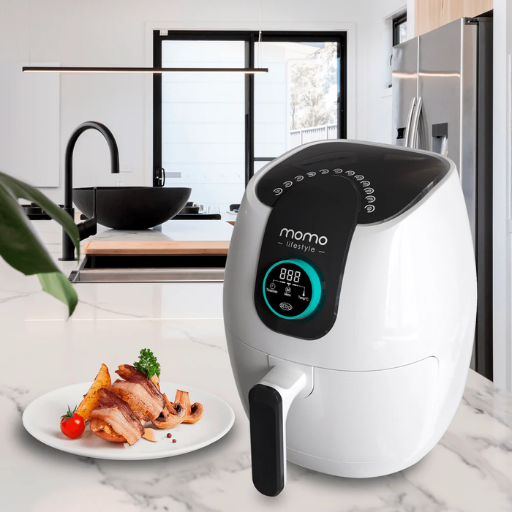
This type of fryer is considered safe and non-toxic, which is also a bonus. Ceramic air fryers do not have the same concerns as traditional non-stick coatings which often used non-stick PTFE or PFOA hot glue filler switch non-ceramic glue can be harmful. Beautifully crafted from inorganic materials, ceramic does not emit toxic fumes even when boiling hot. Even though the brand does matter, it is still important to choose a reputable manufacturer who plays by the book when it comes to safety regulations of air fryers. While these air fryers may be considered safe, do ensure they have proper registration during production so that no cheap materials lacking true standards were used.
What are the concerns regarding PFAS in air fryers?
Air fryers are coated with non-stick PFAS (per- and polyfluoroalkyl substances) which are synthetic and fatal. They resist heat and ease of use, making their primary purpose to fraudulently aid the user of the frying air. Their synthetic coat also aids in making them durable, but lies the concern of being nonbiodegradable and a danger to humanity on a larger scale. This leads to humans being exposed to these ‘forever chemicals’ without them realizing the danger ahead. Studies and research have connected multiple health issues to PFAS exposure, like hormonal dysfunction, enhanced cholesterol, weakened immune health, and increased susceptibility to even particular cancers.
Food Preparation Accessories cookware where the surfaces are covered with PFAS, these surfaces may release harmful vapours when heated. Chemicals are destroyed by the high temperatures of air fryers, thus releasing dangerous gases. Even if there is no threat to health due to PFAS breakdown in the short term, the long term consequences of frequent exposure to PFAS is concerning. Furthermore, products containing PFAS are technically litter, as their disposal increases contamination without the possibility of degradation due to water and soil resistance. Now, the emphasis on the switch has PFAS-free options is increasing, along with the withdrawal of PFAS restrictions in consumer goods, since for other manufacturers, the switch to ceramic-based coating is safer.
How do ceramic air fryers avoid toxic materials?
Ceramic-coated air fryers are made of natural minerals and silica-reinforced inorganic compounds, which has non-stick coatings that do not contain toxic PFAS and will not release dangerous substances during high-temperature cooking. They also do not contain volatile substances that would emit fumes, even in extreme temperature cooking. Their non-stick surfaces do not contain toxic heavy metals such as cadmium and lead which are often used in other cooking gadgets’ coatings. Having exceptional durability coupled with non-stick ease of use and safety, air fryers made with modern technologies are preferred by consumers who seek out products that prioritize health.
Reference Sources
-
Are Your Pots, Pans and Air Fryers Poisoning You? The Truth About Cookware Safety
This article discusses the safety of cookware, including air fryers with ceramic coatings. It emphasizes avoiding products with harmful chemicals like PTFE, PFOA, and PFAS. -
Air fryer: Reflections on working class objects of desire and changing food culture
This study explores the cultural and societal impact of air fryers, including their role in modern food preparation and consumption habits. -
Tips for Reducing Hidden Toxins in the Kitchen
This article highlights the importance of choosing toxin-free cookware, including ceramic-coated air fryers, to minimize exposure to harmful substances. -
Use of potato processing by-product: Effects on the 3D printing characteristics of the yam and the texture of air-fried yam snacks
This research focuses on the use of air fryers in food processing, particularly for creating air-fried yam snacks using innovative 3D printing techniques.
Frequently Asked Questions (FAQs)
Q: What is a ceramic air fryer and how does it compare to traditional ovens?
A: A ceramic air fryer is a kitchen appliance that uses convection heating to cook food with little to no oil, making it healthier than traditional frying methods. Unlike traditional ovens, ceramic air fryers are designed to provide a crispy texture while reducing fat intake, and they often come with non-toxic coatings.
Q: Are Ninja air fryers safe to use, and do they have non-toxic coatings?
A: Yes, Ninja air fryers, including models like the Ninja Air Fryer Pro 4-in-1, are designed with safety in mind. Many of their models feature PFAS-free ceramic coatings, which are considered non-toxic and safe for food contact.
Q: Can you use parchment paper in a ceramic air fryer?
A: Yes, parchment paper can be used in a ceramic air fryer to help prevent food from sticking to the cooking basket. It is recommended to use parchment paper specifically designed for air fryers to ensure safety and optimal cooking.
Q: What are the advantages of using a 2-basket air fryer over a traditional toaster oven?
A: A 2-basket air fryer allows for cooking two different foods simultaneously, which saves time and makes meal preparation more efficient compared to a traditional toaster oven. Additionally, air fryers often provide a crispier finish and require less oil than toaster ovens.
Q: How do I clean my ceramic air fryer?
A: To clean your ceramic air fryer, allow it to cool down and then wash the cooking basket and other removable parts in warm, soapy water. Many ceramic air fryers are dishwasher safe, so you can also place them in the dishwasher for easy cleaning. It is advisable to avoid abrasive cleaners that could damage the non-stick coating.
Q: What types of foods can I cook in an air fryer oven?
A: An air fryer oven can cook a variety of foods, including meats, vegetables, and even baked goods. You can use air fryers to dehydrate fruits, broil meats, and prepare air fryer recipes that typically require less oil compared to traditional frying methods.
Q: How do air fryers work and are they really healthier than traditional fryers?
A: Air fryers work by circulating hot air around the food, which allows for even cooking and crisping without the need for large amounts of oil. Compared to traditional fryers, air fryers can significantly reduce fat content, making them a healthier option for cooking.
Q: What should I look for when choosing the best non-toxic air fryer?
A: When selecting the best non-toxic air fryer, look for models that feature PFAS-free ceramic coatings, a reliable timer, and convection heating capabilities. Additionally, consider the size and capacity of the cooking basket, especially if you often prepare meals for larger groups.

